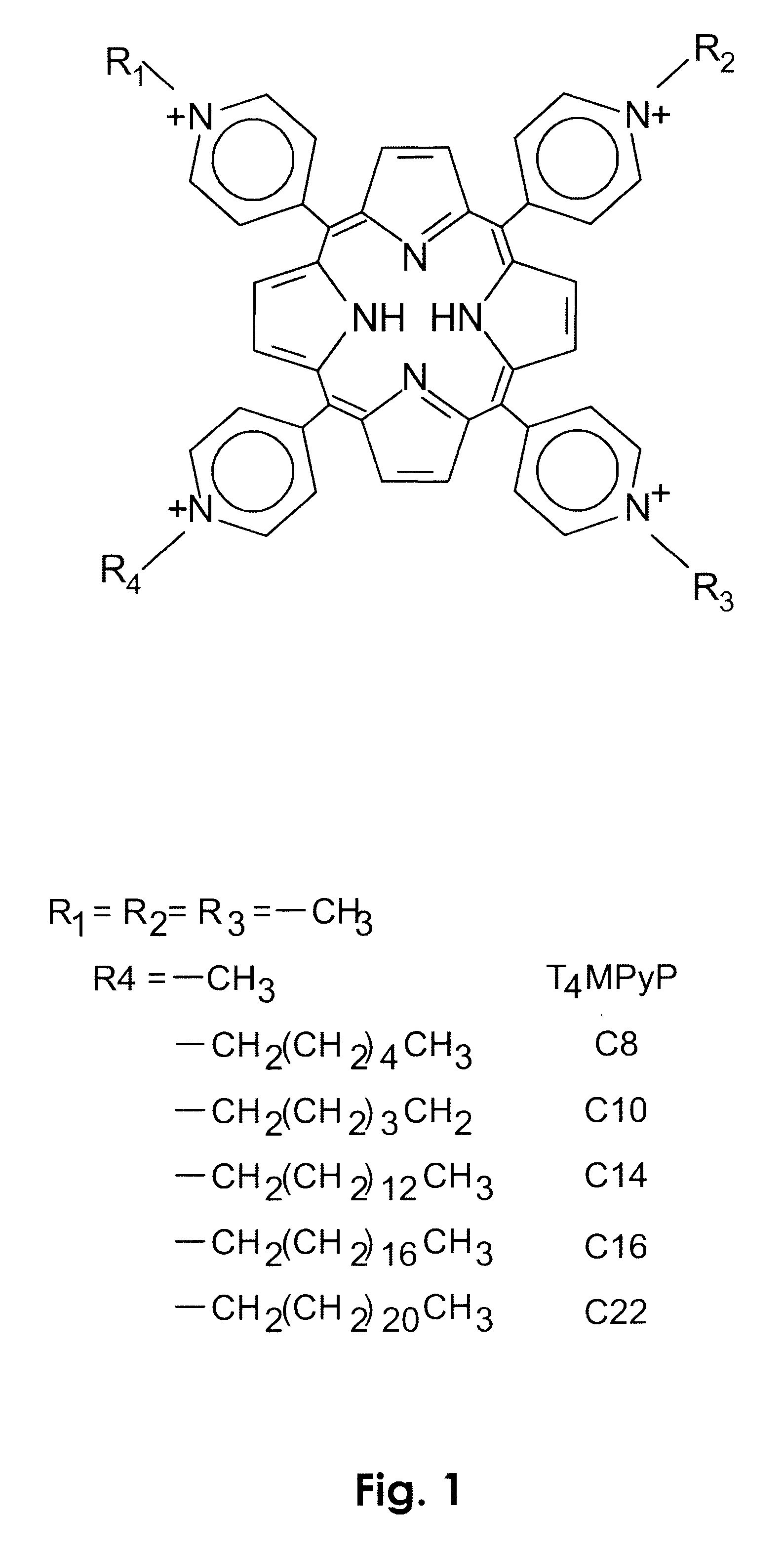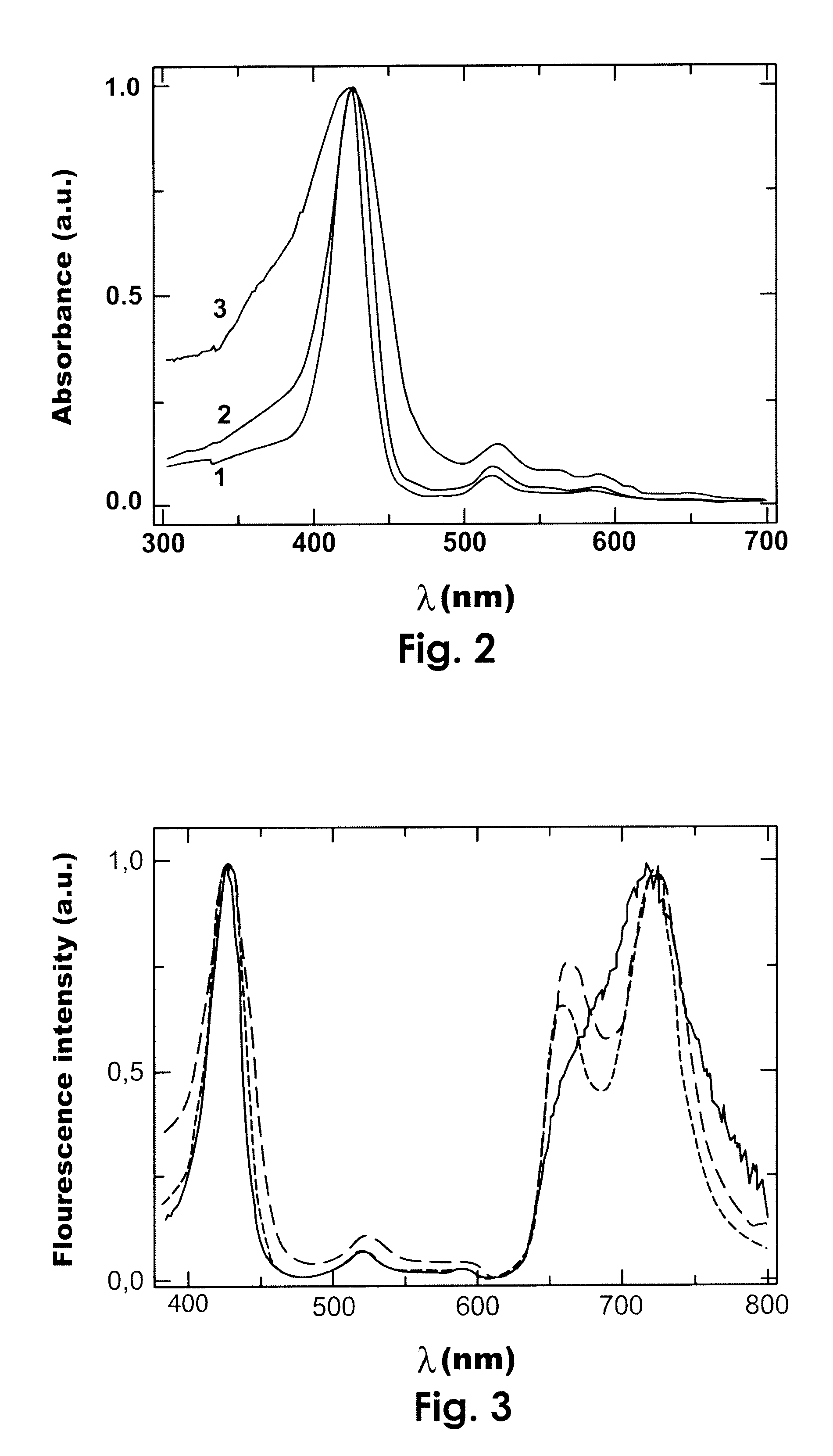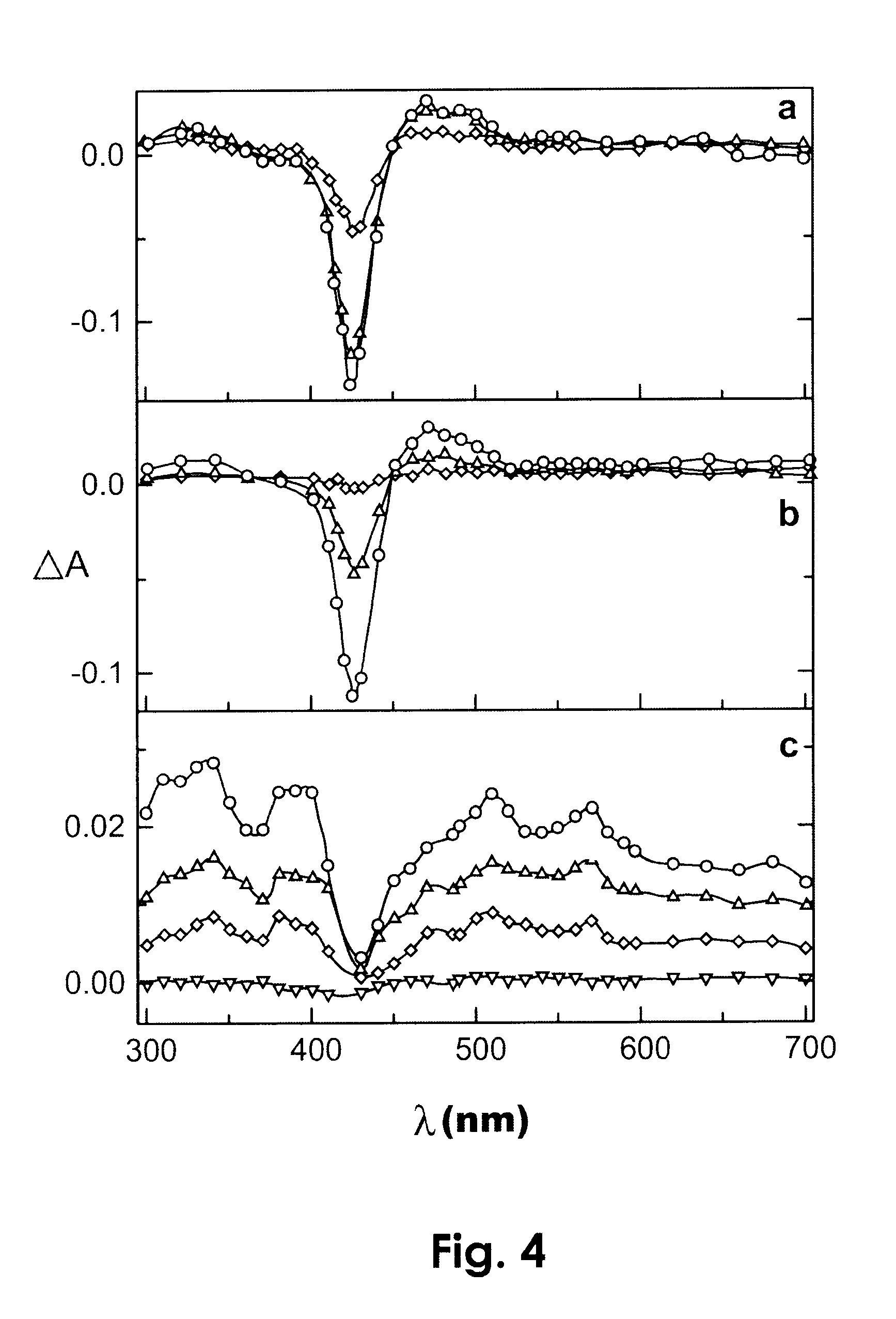Photodynamic porphyrin antimicrobial agents
a porphyrin and antimicrobial technology, applied in the field of antimicrobial agents, can solve the problems of increasing the number of microorganisms developing antibiotics, the discovery and development of new antibiotics has been a slow process, plagued by uncertainty, and the development of additional antibiotic-resistant microorganism strains
- Summary
- Abstract
- Description
- Claims
- Application Information
AI Technical Summary
Benefits of technology
Problems solved by technology
Method used
Image
Examples
example 2
Preparation of 5-(4-N-tetradecylpyridyl)-10,15,20-tris(4-N-methylpyridyl)-21H,23H-porphine tetrachloride dihydrochloride salt:
1 gram (1.61 mmoles) of 5, 10, 15, 20 tetra(4-pyridyl)-21H,23H-porphine plus 357 mg (1.29 mmoles) 1-bromotetradecane along with 500 mg of anhydrous sodium acetate were refluxed for 16 hours in 20 ml of glacial acetic acid. Thin layer chromatography on silica plates eluting with isopropanol / water / acetone / acetic acid / concentrated ammonium hydroxide, V / V / V / V / V showed about 30% monosubstituted porphyrin with traces of disubstituted and remainder starting porphyrin. The solvent was removed by rotary evaporation, and the solid was extracted by refluxing for 4 hours with 200 ml of methanol. This was filtered while hot to remove most of the starting porphyrin, then again after cooling in the refrigerator for several hours to remove most of the remaining starting porphyrin. The solution was reduced in volume on the rotary evaporator to about 20 ml, then cooled in the ...
example 3
Preparation of 5-(4-N-hexylpyridyl)-10,15,20-tris(4-N-methylpyridyl)-21H,23H-porphine tetrachloride dihydrochloride salt:
1 gram (1.61 mmoles) of 5, 10, 15, 20 tetra(4-pyridyl)-21H,23H-porphine plus 273 mg (1.29 mmoles) of 1-iodohexane and 500 mg of anhydrous sodium acetate were refluxed for 18 hours in 20 ml of glacial acetic acid. Thin layer chromatography on silica plates eluting with isopropanol / water / acetone / acetic acid / concentrated ammonium hydroxide, V / V / V / V / V showed only 15-20% of the monosubstituted product. 144 mg more 1-iodohexane was added to the mixture, and reflux continued for an additional 10.5 hours. Thin layer chromatography with above system showed 20-25% monosubstituted product. A further 144 mg of 1-iodohexane was added to the mixture and reflux continued for an additional 12 hours resulting in an estimated 30% monosubstituted product by above thin layer chromatography system. The solvent was removed by rotary evaporation, and the solid was extracted for 2 hours ...
example 4
Preparation of 5-(4-N-octadecylpyridyl)-10,15,20-tris(4-N-methylpyridyl)-21H,23H-porphine tetrachloride dihydrochloride salt.
1 gram (1.61 mmoles) of 5, 10, 15, 20 tetra(4-pyridyl)-21H,23H-porphine plus 490 mg(1.29 mmoles) 1-iodo-octadecane were refluxed for 16 hours in 20 ml of glacial acetic acid. Thin-layer chromatography on C-18 silica reversed phase plate eluting with 90 / 10 methanol / 6N HCl V / V showed approximately equal amounts of the mono-N-octadecyl derivative and starting material with a trace of the di-N-octadecyl derivative (decreasing Rf with increasing substitution). The solvent was removed by rotary evaporation and 200 ml of methanol plus 1 ml of glacial acetic acid was added and the solution refluxed for 6 hours, then allowed to stand at room temperature overnight. The solution was filtered, and the filtrate, which contained mostly mono-substituted porphyrin with small amounts of di-substituted and starting porphyrin, was evaporated to dryness on the rotary evaporator. ...
PUM
| Property | Measurement | Unit |
|---|---|---|
| volume | aaaaa | aaaaa |
| V/V | aaaaa | aaaaa |
| volume | aaaaa | aaaaa |
Abstract
Description
Claims
Application Information
 Login to View More
Login to View More - R&D
- Intellectual Property
- Life Sciences
- Materials
- Tech Scout
- Unparalleled Data Quality
- Higher Quality Content
- 60% Fewer Hallucinations
Browse by: Latest US Patents, China's latest patents, Technical Efficacy Thesaurus, Application Domain, Technology Topic, Popular Technical Reports.
© 2025 PatSnap. All rights reserved.Legal|Privacy policy|Modern Slavery Act Transparency Statement|Sitemap|About US| Contact US: help@patsnap.com



